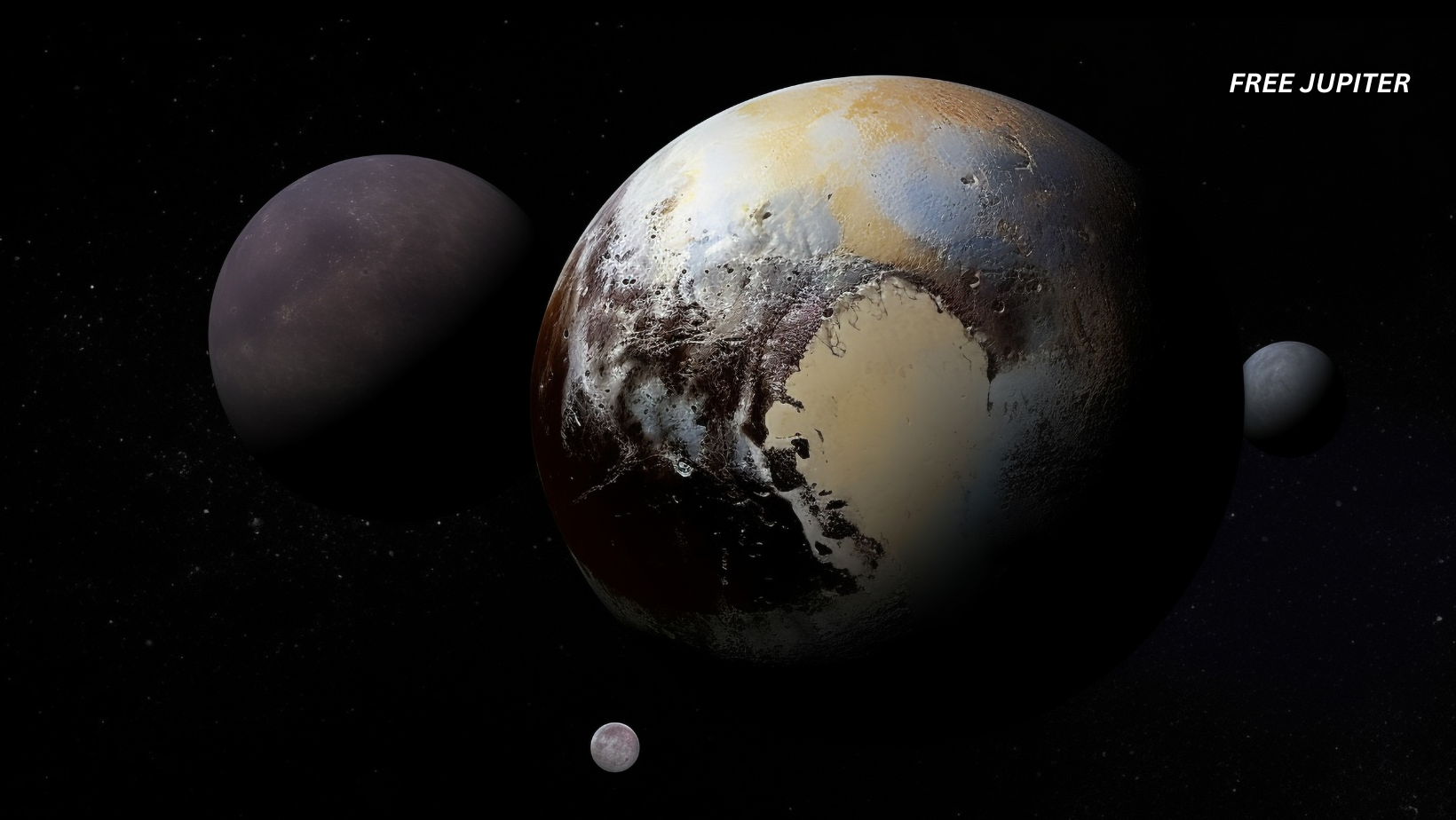Friendly Note: FreeJupiter.com shares general info for curious minds 🌟 Please fact-check all claims—and always check health matters with a professional 💙
For centuries, humanity has looked up at the stars and wondered: Are we alone in the universe? That question might have just inched closer to an answer, thanks to a recent discovery by NASA’s James Webb Space Telescope (JWST). In a faraway corner of the cosmos, researchers may have detected a set of unusual gases floating in the atmosphere of an alien planet — gases that, here on Earth, are only made by living organisms.
While we’re still a long way from confirming extraterrestrial life, this new finding could be one of the most intriguing clues yet.
A Planet With Possibilities: Meet K2-18b
The spotlight is now on a planet known as K2-18b, which orbits a red dwarf star about 124 light-years away from Earth in the constellation Leo. That’s roughly 730 trillion miles — an unimaginable distance, but practically next door in galactic terms.
What makes K2-18b stand out among the thousands of exoplanets we’ve discovered is its classification: it’s what scientists call a Hycean world. This term refers to a hypothetical type of planet believed to be covered in vast oceans and surrounded by a thick, hydrogen-rich atmosphere. These kinds of planets are thought to offer conditions that might be suitable for life — not necessarily life as we know it, but perhaps something we’ve never encountered before.
K2-18b is about 2.6 times the size of Earth and likely has a much higher mass. It resides in the habitable zone of its star, which means temperatures could be just right to allow liquid water to exist — a critical ingredient for life as we understand it.
Read more: The ‘Alien Language’ Problem That Has Stumped Mathematicians For Decades May Finally Have A Solution
What Exactly Did Scientists Discover?
Using JWST’s extremely sensitive instruments, scientists detected the chemical fingerprints of two compounds in K2-18b’s atmosphere:
- Dimethyl sulfide (DMS)
- Dimethyl disulfide (DMDS)
Why are these gases raising eyebrows? Because on Earth, both are produced almost exclusively by living organisms, especially marine microbes like phytoplankton. DMS, for example, is a byproduct of tiny sea creatures and plays a role in cloud formation. It’s also what gives ocean air that slightly “sulfurous” scent.
So, when DMS and its close chemical cousin DMDS turn up in the atmosphere of a planet over a hundred light-years away — a planet we suspect may have oceans — it definitely sparks interest.
Why This Could Be a Big Deal
To put it plainly, there are no known non-biological processes on Earth that produce significant amounts of DMS or DMDS. That doesn’t mean other, non-living processes couldn’t make them on alien planets — but we don’t know of any yet. In the absence of a better explanation, this points to a possible biological origin.
The findings are backed by a level of statistical confidence known in the scientific world as “three sigma.” This means there’s only a 0.3% chance that the results were a random fluke. While it’s not enough to be considered proof, it’s certainly a strong signal that something strange — and potentially groundbreaking — is happening on K2-18b.
More Than Just One Molecule
This isn’t the first time K2-18b has impressed scientists. In earlier observations, researchers detected the presence of methane and carbon dioxide in its atmosphere — both of which are organic compounds that, depending on how they’re formed, can either signal geological activity or hint at life.
The new potential detection of DMS and DMDS, layered on top of these earlier findings, paints a more complex picture. It suggests a planet with not just organic chemistry, but possibly active biological processes — or at least processes that we don’t yet fully understand.
What’s even more curious is the amount of these compounds. Some estimates suggest that DMS levels on K2-18b could be thousands of times higher than those found on Earth. That doesn’t necessarily mean there’s a bustling ocean full of alien life, but it does indicate something unusual is going on — and it’s something we can’t yet explain.
A Brief Look at the Technology Behind the Discovery
To make a discovery like this, scientists rely on a technique known as transit spectroscopy. Here’s how it works: when a planet passes in front of its host star from our viewpoint, some of the starlight filters through the planet’s atmosphere. Different molecules in the atmosphere absorb light in specific patterns — like a chemical barcode.
JWST is equipped with instruments that can detect even the faintest of these patterns. By studying the light that comes through, astronomers can figure out what gases are floating in that alien sky. In the case of K2-18b, this technique revealed the presence of DMS, DMDS, methane, and carbon dioxide — a chemical cocktail that has caught the scientific community’s attention.
Read more: Breakthrough Study Suggests That Aliens Might Be Living in Parallel Universes
Could There Be Another Explanation?
While the idea of alien life is thrilling, scientists are carefully cautious, as they should be. There may be alternative explanations. After all, our understanding of chemistry outside Earth is still developing.
For example, it’s possible that under the extreme conditions found on a Hycean world, exotic geological or atmospheric processes could create DMS or similar compounds without life being involved. Since we’ve never directly observed one of these planets up close, we can’t yet say for sure what kinds of reactions might be possible.
That’s why scientists are hesitant to jump to conclusions. As promising as the evidence is, it’s only one piece of a larger puzzle.
Why Hycean Worlds Are Now a Hot Topic
Until recently, most of the search for alien life has focused on Earth-like planets — rocky, with breathable air, and temperatures that allow for liquid water. But Hycean worlds offer a new frontier. They may not look or feel like Earth, but their combination of water and rich atmospheres makes them exciting targets in the search for life.
Planets like K2-18b challenge our assumptions. They suggest that life might not need to follow Earth’s script. Instead, it might evolve in strange, extreme, and surprising ways — perhaps beneath thick clouds of hydrogen, in deep alien oceans, far from the warmth of a yellow sun.
What Happens Next?
The next step is clear: more observations. JWST will continue to gather data from K2-18b to confirm the initial findings. At the same time, astronomers will be on the lookout for similar signals on other Hycean planets.
The goal is to build a pattern of evidence. If DMS and other biosignatures start showing up repeatedly on multiple exoplanets, the case for alien life will become much stronger. On the other hand, if follow-up studies find that these signals were misread or the result of unknown chemistry, the mystery will take a different turn — one still worth pursuing.
Either way, K2-18b has opened a new door.
A Quiet Revolution in Astronomy
Even if this particular lead doesn’t turn out to be alien life, the fact that we’re now able to analyze the atmospheres of distant worlds is a remarkable achievement in itself.
For the first time in human history, we can look at a planet more than 100 light-years away and say with some confidence: “It has clouds. It has methane. It might even smell faintly of the sea.”
This ability represents a quiet revolution in our search for life. We’re no longer limited to looking within our own solar system. With the James Webb Space Telescope, the entire galaxy is starting to feel just a little more accessible — and a little more alive.
Read more: Harvard Researcher Suggests Ancient Martian Civilization Was Destroyed by Alien Nuclear Event
The Bottom Line: Are We Alone?
We don’t know yet. But K2-18b has just given us a promising new lead — and maybe, just maybe, a whiff of something familiar carried across the cosmos.
If future studies confirm that DMS and DMDS truly originate from biological activity, it would be one of the most profound discoveries in human history. It would mean that life has found a way not just on Earth, but on another world, under a completely different sky.
Until then, the mystery continues — but it’s never felt closer to being solved.










